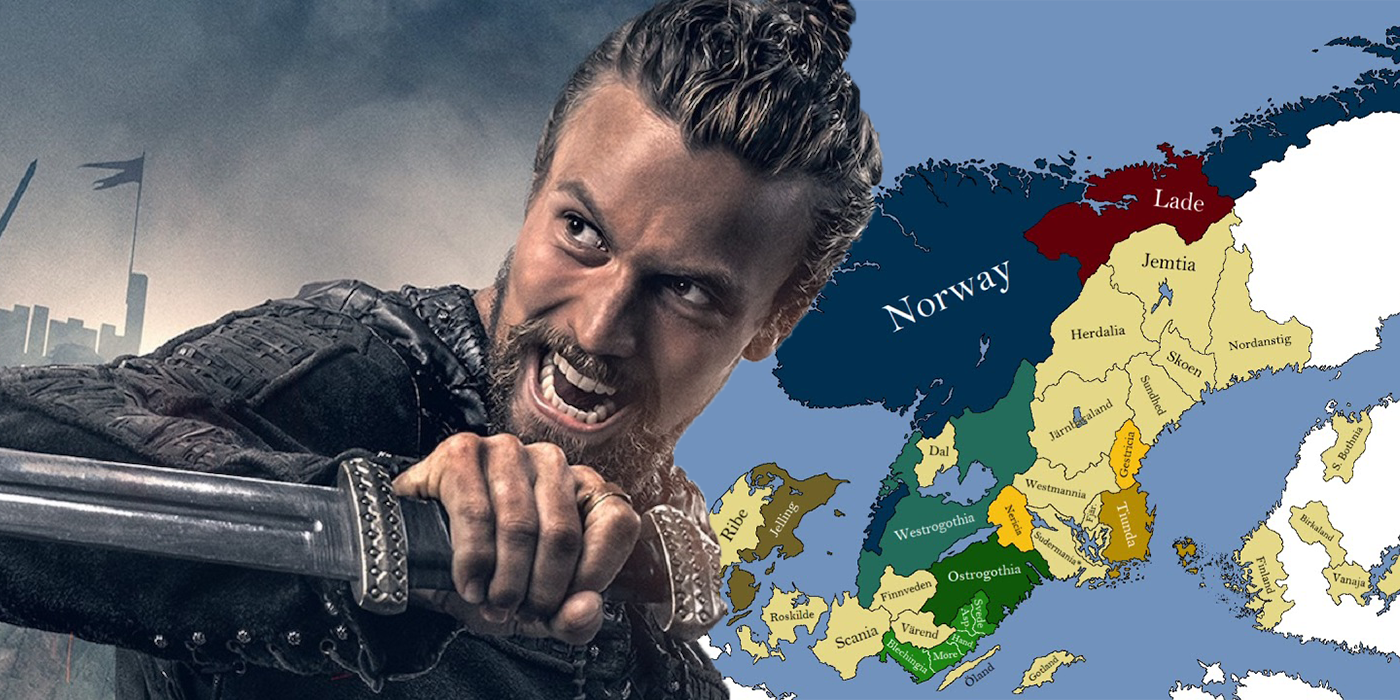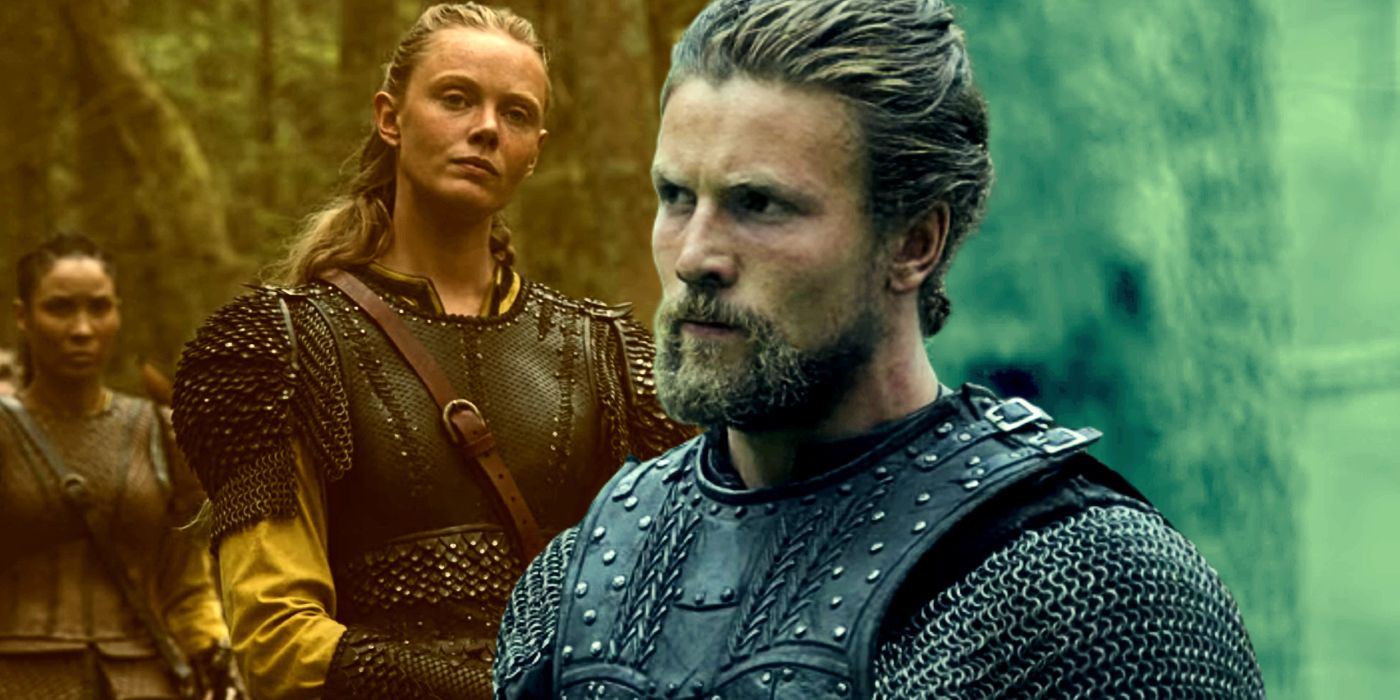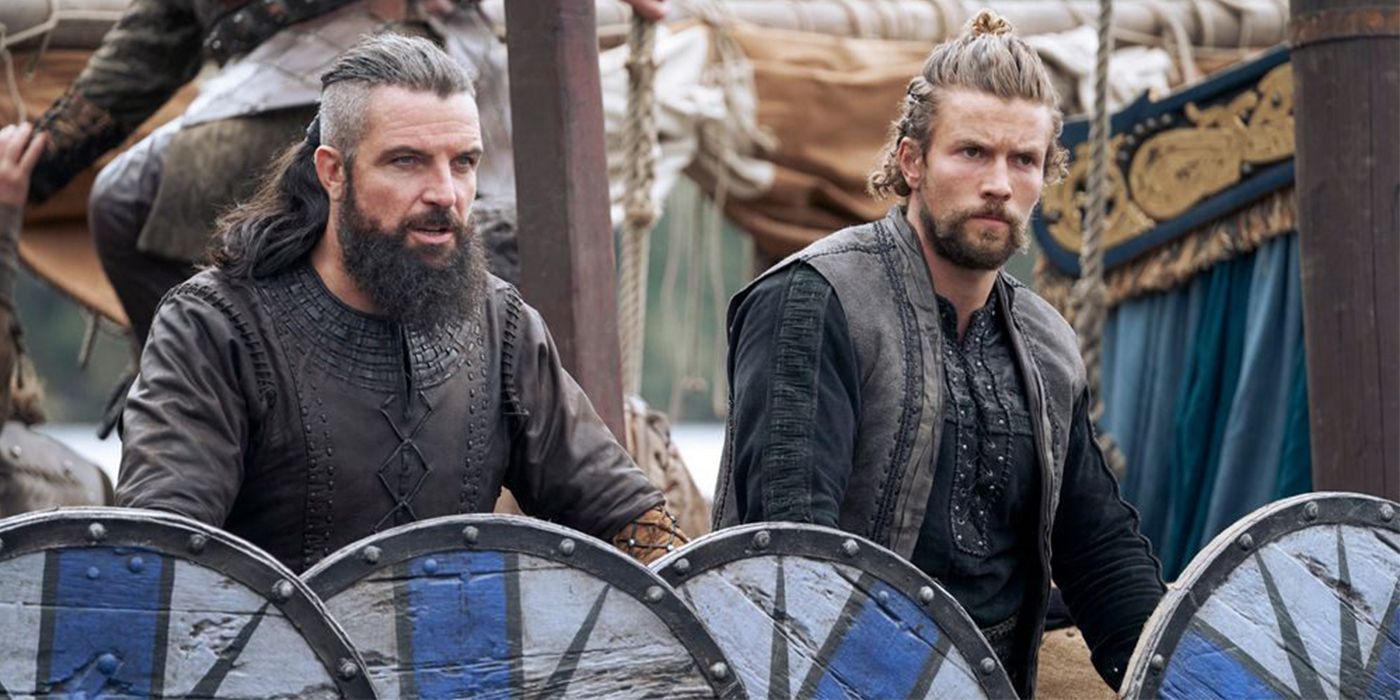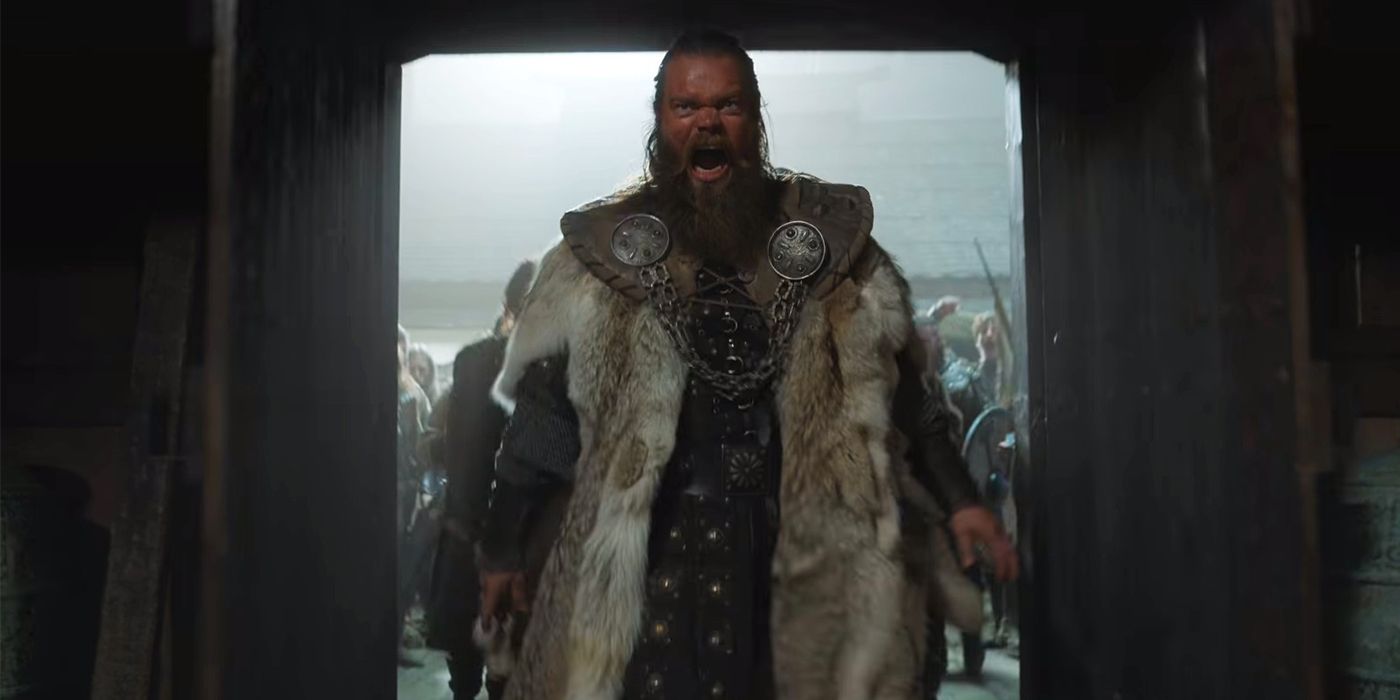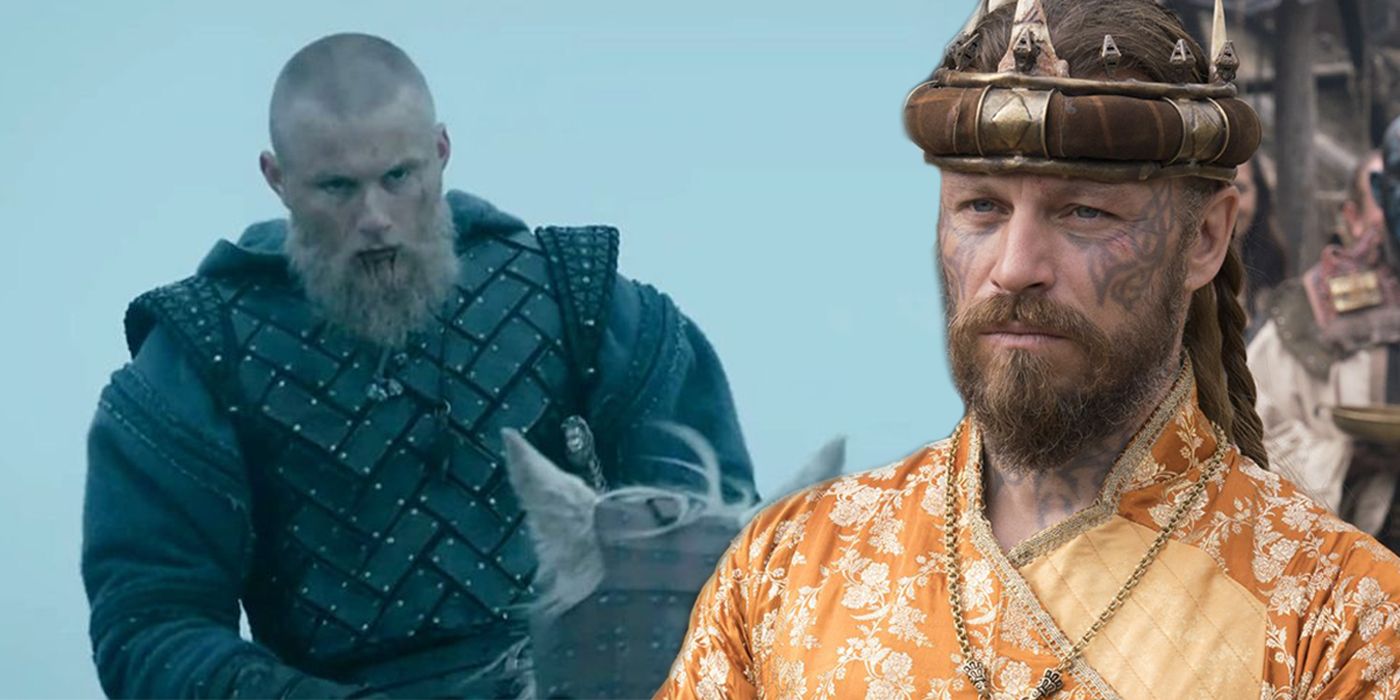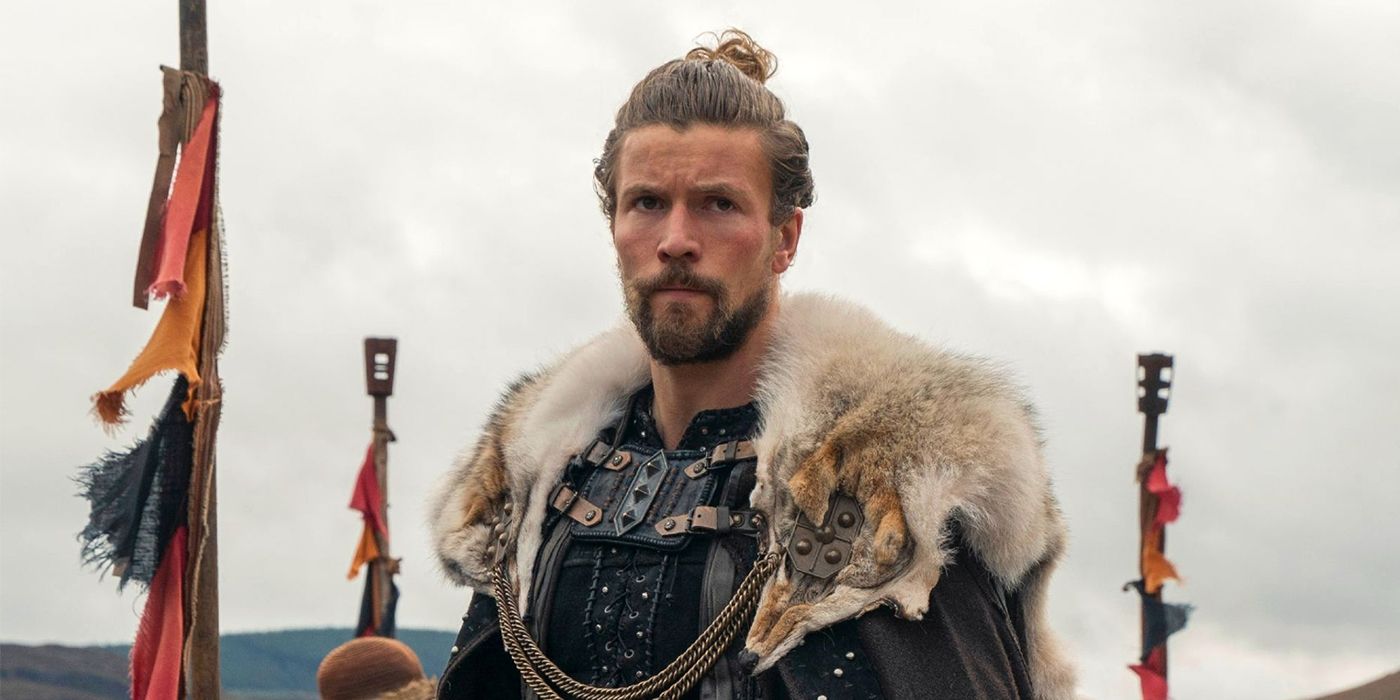Harald Sigurdsson, better known to history as Harald Hardrada, is one of the main characters in Vikings: Valhalla with clear aspirations to become King of Norway, begging the question of whether his true story found him achieving this goal. Both the original Vikings show and now its sequel, Vikings: Valhalla are loosely based on the Norse sagas, epic tales of great Norsemen and Vikings. Therefore, many of the characters within these shows are Norsemen who appear in these sagas, including but not exclusive to the tales of Ragnar Lodbrok, Rollo, Bjorn Ironside, and now even Leif Erikson, Harald Sigurdsson, Freydis Eriksdottir, and Cnut the Great.
Harald Sigurdsson is no exception to the greatness told by the Norse sagas, having carved out a uniquely interesting corner of history for himself, challenging the greatness of perhaps even the most renowned Viking warriors of his era. Taking place 100 years after Vikings, Valhalla looks to explore Harald's tale; however, in true Viking fashion, it is unclear how true to the sagas the story in the show is. Valhalla carries the torch of Vikings, which was known for taking creative historical liberties, altering dates and blending stories to streamline the narrative for viewers.
This ultimately raises the question of what became of Harald in real life and if he became the King of Norway. While the show may not answer that question for some time, the legends and sagas from history do offer insight into Harald’s future, but equally his past. Despite many aforementioned historical liberties, it is equally worth noting much of Harald’s interestingly diverse life was lived outside of the confines of the Northern European political struggle, making a name for himself not only in Europe but in the Byzantine Empire.
What The Real Harald Sigurdsson Did Before Valhalla’s Timeline
Viewers don’t need to watch Vikings to understand Valhalla, as most of the stories of the characters in the show, especially Harald, remain unexplored. Much of Harald’s early life took place outside of Northern Europe, specifically in Eastern and Southeastern Europe, in the lands of the Kievan Rus’ and the Byzantine Empire. Having fled to the Rus’ in exile, Harald quickly gained favor with Yaroslav the Wise, due to his relations to half-brother Olaf, who had also spent time in the Rus’. Captaining a force of men in the Rus’, Harald would fight battles for the prince and eventually move south toward the Byzantine Empire.
Norsemen, known as Varangians to the Byzantines, were highly sought after as Imperial Guards due to their ferocity and fighting ability, with their loyalty consistently bought by the riches offered to them by the emperor. With Harald perhaps equalling even Ragnar in his ferocity and mirroring Bjorn Ironside's intrigue in the world outside of his own, Harald proved no exception to the Byzantine rule and waged many a war on their behalf. Rumored to have traveled as far as Jerusalem and Mesopotamia in the name of Byzantine wars, and perhaps even traveling to Sicily, Harald managed to accumulate massive wealth from Byzantine payments, which he trusted Prince Yaroslav to care for in the Rus’. Not only were Harald’s exploits, battles, and travels vast and plentiful, but so was his amassed wealth as a result, allowing him to claim the throne of Norway as his brother had done.
Did Valhalla’s Harald Ally With King Canute? True Story Changes Explained
The story of Vikings: Valhalla frames Harald Sigurdsson and King Canute as allies, at least at first, both aiming to avenge the deaths of Norse settlers in England at the hands of the English king, Aethelred the Unready. However, Valhalla repeats Vikings’ lack of historical authenticity, blurring the waters between real historical timelines and the timelines of characters in the show. The St. Brice’s Day massacre, the event that kickstarted the Viking plot of vengeance that unites Canute, Harald, and Leif in Vikings: Valhalla, was actually avenged by Sweyn Forkbeard, who is omitted from the show’s story. In fact, the massacre took place before the real Harald was even born, so real historical events and characters have been condensed and merged for the ease of the plot.
In short, Harald and Canute did not ally themselves for the mission that they embarked on in season 1 of Vikings: Valhalla, but their historical significance together does not end there. Despite its creative liberties with historical timelines, Vikings: Valhalla sets up a heartbreaking end, not only due to the impending close of the Viking Age but also due to plenty of infighting. The true story behind Harald’s saga is that he originally went into exile due to his support for his half-brother Olaf’s attempt to reclaim the Norwegian throne which was then held by Canute himself, having taken it from Olaf. With Canute busy and caught up with conflicts in England, Olaf, along with his brother, had hoped to seize the Norwegian throne. However, Olaf met his end at the Battle of Stiklestad, sending Harald into exile with serious wounds. It's safe to surmise that the true story of the relationship of Harald and Canute was less friendly than the show would have viewers believe.
Harald’s Real Relationship With Olaf & What Valhalla Changes
The half-brother relationship between Olaf and Harald in Valhalla is accurate to real-life history, with the two brothers sharing historical significance. Valhalla differs from Vikings in many ways; however, it seems to share a theme of sibling intrigue, a theme that appeared often in the original show, hinting that the historical relationship between the two characters may well be respected by the plot. The real Harald was noted for looking up to and admiring his older brother, and for sticking by him in his political and military ambitions, a notion that the show sheds.
The aforementioned claim to the Norwegian throne is a shining example of this relationship that the two shared. Olaf, upon losing the throne, spent time exiled in the Rus’. Upon his return to Norway, Harald raised a force of men to meet and join his brother without being asked or told to do so. Harald remained unquestionably loyal to his brother’s royal claims, and would later use his deceased brother to legitimize his own claim. Staying true to the somber meaning of the spinoff’s Vikings: Valhalla title, Harald cared little that the man who sat on the throne upon his return was none other than his nephew, the son of Olaf, Magnus, and staked his claim regardless.
Did Harald Sigurdsson Become King Of Norway?
Harald’s return to Norway marked an alliance with Sweyn Estridsson, a Danish royalist pretender who laid claim to Magnus’s Danish throne. Despite a raiding campaign against the coastlines of Denmark, the united forces of Harald and Sweyn failed to accumulate further support. However, an agreement was reached between Magnus and Harald that they could rule as a cooperative. Harald’s ambitions for absolute rule didn't have to wait much longer, as Magnus died shortly after, leaving Harald to rule alone, and Sweyn put in place as King of Denmark.
Harald’s real-life ambitions were realized and he was eventually crowned as King of Norway, despite aspiring for greater success in true Viking fashion and living up to Ragnar’s ambitious Viking legacy. Harald went on to wage a war with neighboring Sweyn, looking to secure the throne of Denmark, a war that would end in stalemate while illustrating Harald’s ambitions for greatness. The cost of this war against Denmark also saw Harald treat his own people harshly, accusing them of withholding taxes and enacting brutality against them. This earned him the name of “hard ruler,” anglicized as “Hardrada.” Despite his reputation and military failure, Harald had ultimately succeeded in his desire to take the Norwegian throne.
What Happened To Harald Sigurdsson In Real Life
Harald’s list of claims to thrones is not limited to Norway and Denmark; he later went on to gain his contemporary notoriety thanks to his claim to the English throne. This move was perhaps an attempt to restore Canute’s North Sea empire, a theory corroborated by his displayed desire to also rule Denmark. Norse interest in England was not alien, another link between Vikings and Vikings: Valhalla. Harald was equally noted for his interest in exploration, having sailed beyond his own kingdom, perhaps in search of the famed Vinland, providing another potentially exciting link in Vikings: Valhalla thanks to his relations with Leif Erikson.
In 1066, upon the death of Edward the Confessor, King of England, Harald Sigurdsson embarked with an army to England to claim the throne for himself. Harald’s landing in England was preceded by coastal raiding, and he secured an initial victory against the English at the Battle of Fulford. Unfortunately for Harald, the newly crowned English king, Harold Godwinson, managed to secure a surprise victory against Sigurdsson at the Battle of Stamford Bridge. Most of Harald’s army was destroyed and Harald himself was killed. In another link to the story of the original Vikings show, the descendent of Rollo, William of Normandy would take the English throne by the end of the war, with Harold Godwinson dying at the Battle of Hastings.
Harald’s claim not only to the English throne, but also to his own life and rule over Norway came to an end in England, with most scholars accepting that his death marked the end of the Viking Age. While it remains unconfirmed as to exactly what plotlines and exploits Vikings: Valhalla will explore, with the variety of characters that the show has introduced so far, it seems likely that much of Harald’s life will be integrated into the plot to some extent. The inclusion of Harald Sigurdsson in this story, as well as many of the other characters, not only means that Vikings: Valhalla can provide closure to Rollo’s story, but to the story of the Viking Age overall. The true story of Harald Sigurdsson found him indeed taking the Norwegian crown, but was the bittersweet beginning of the end of the Viking Age.

